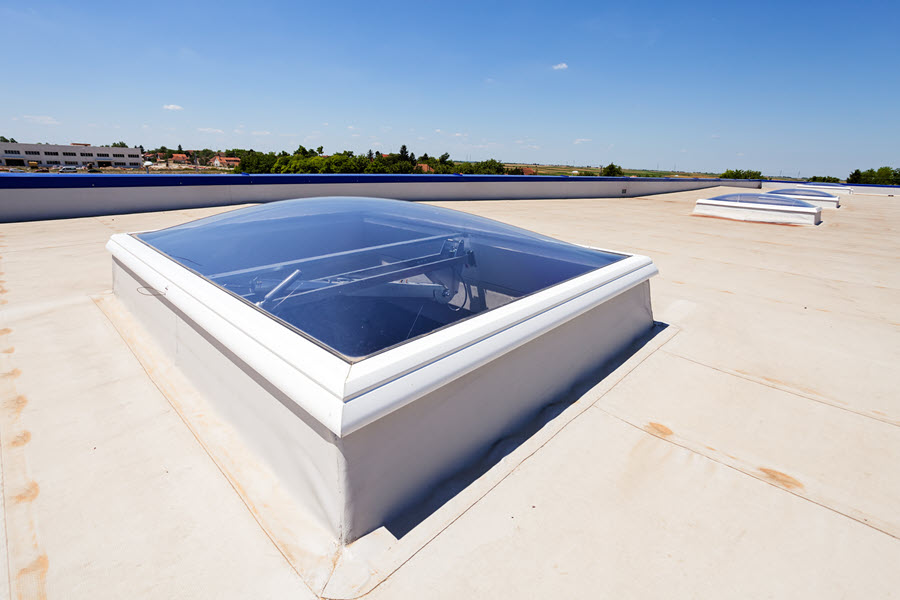
When you think about the dangers commercial roofing is exposed to, your mind likely first turns to severe storms, hurricanes, and harsh winds. As a result, the sun is often overlooked as one of the biggest threats to roofs.
However, prolonged exposure to radiation from the sun’s rays can take a major toll on commercial roofing systems. Without proper protection, they can weaken over time due to the effects of thermal shock, increasing the temperature within the building and affecting the overall structural integrity of the roof itself.
Understanding How Heat Affects Commercial Roofing Systems
The exact manner in which the sun affects a commercial roofing system depends on a number of factors, including general environmental conditions as well as the material and color of the roof. Darker colors absorb more heat from the sun, and a black roof can get up to 100 degrees over the ambient temperature. In other words, on a sweltering summer day, your black roof is likely scorching. Unpainted metal can clock in at around 50 degrees hotter than the ambient temperature, while white roofs can get quite warm at about 30 degrees hotter.
Now that you know just how high your roof’s temperature can skyrocket in the summer, let’s explore some of the different ways heat exposure can compromise your commercial roof:
- Structural Issues.
High temps can cause the components of the roof to crack, curl, and eventually disintegrate, significantly reducing their lifespan. - Thermal Shock.
When most materials are heated up, they expand; upon cooling, they contract. Roofing materials are no exception. This cycle of expansion and contraction can result in seams opening up, which is a significant problem for the structural integrity of your roof. - Damage From UV Rays.
Certain materials can actually undergo changes to their molecular structure after being exposed to UV rays. When this happens, oxygen molecules bind to hydrocarbons, causing the material to become brittle and crack. UV rays can also damage the original protective finish applied on metal roofs, causing rust to form. - Energy Costs.
Damaged roofs that absorb heat from the sun can release that heat into the building below. Not only can this make things uncomfortable or unsafe depending on the types of operations occurring within the building, but it can also cause your energy bills to rise substantially.
Protecting Your Roofing System from Extreme Heat
The good news is there are several things you can do to mitigate sun-related damage to your roofing system. The first and most important is to have annual inspections conducted by a licensed professional roofing contractor.
The inspector will look for vulnerabilities and problem areas that should be addressed before they worsen. From gaps in seams to rust to the cracking of composites, there are a number of telltale signs the roofing contractor will keep an eye out for. Fortunately, if these are caught in time, minor repairs can prevent the need for major restoration.
Another step that can promote a robust roofing system even in hot summers is ventilation. A professional roofing contractor can help ensure the right kind of ventilation is installed for your roof type. This will help reduce the amount of heat your roof absorbs and minimize the accumulation of humidity.
There are also heat-resistant coatings available that can be painted on your roof as added protection. These reflective coatings can slow aging, bring cooling costs down, and prevent the thermal shock and UV damage that come from excessive sun exposure.
Furthermore, if you’re in the market for a new roof and are looking for one that is particularly resistant to extreme heat, options such as Duro-Last can give you peace of mind your commercial roofing system has been specifically designed to withstand the elements.
Learn more about how we can help protect your commercial roofing system from the sun’s rays. Contact AMW Contracting today at 904-725-4197 to speak with a trusted roofing contractor in the local area.
